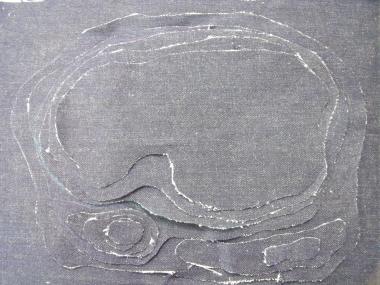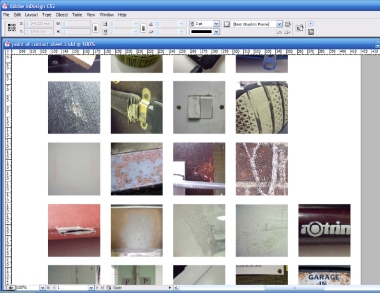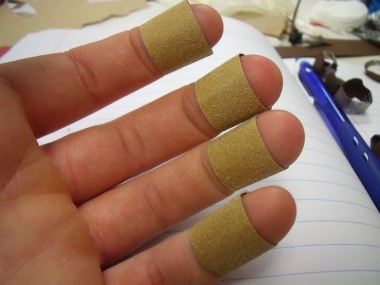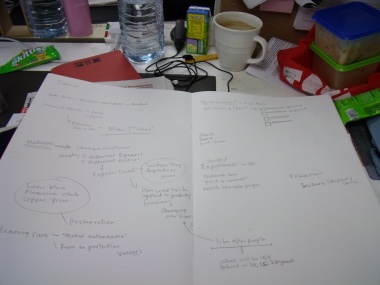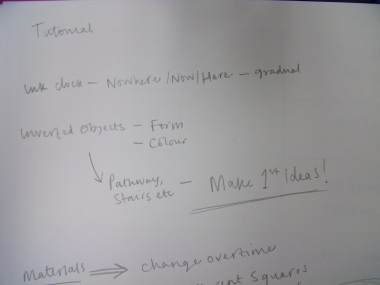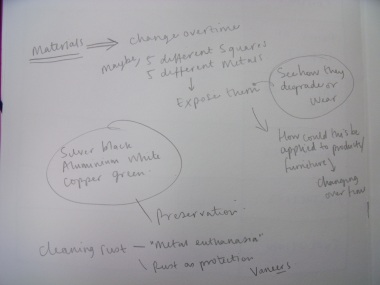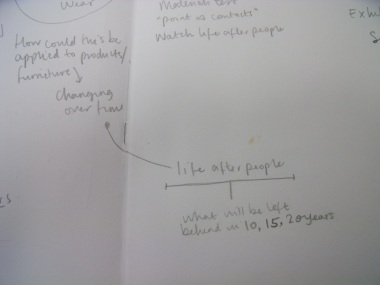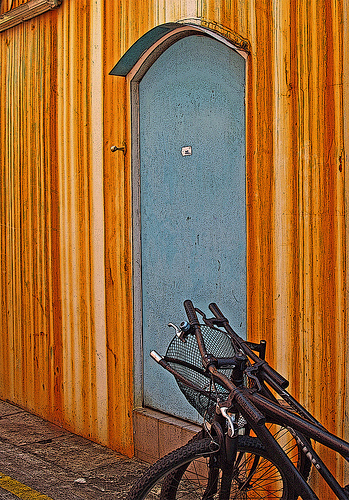Defining my territory:

I spent my first two weeks looking at the briefs upcay decay and repetition repetition, and my ideas have continued to develop from these briefs. There were a couple of experiments that I carried out during this period that helped to develop into where my project and territory is today- which is ‘The evolution of a space or object through use and time’
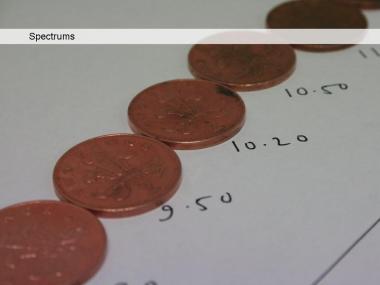
The first experiment was taking coppers and leaving them in coke for a period of time, doing this gradually over a period of time meant that a ‘spectrum of decay’ could be recorded and a step by step visual of the dirt layers being taken off. The evidence of its use slowly being removed.
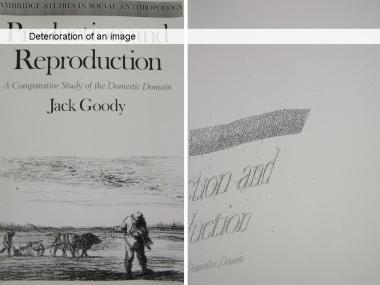
The second experiment was using a photocopier where I looked at ‘the machine’ as a way to record the decay. I took an image and photocopied it. I then photocopied the photocopy and continued this process – the outcome was a printed copy of decay, a flip book that slowly layer by layer degraded through the machine alone.
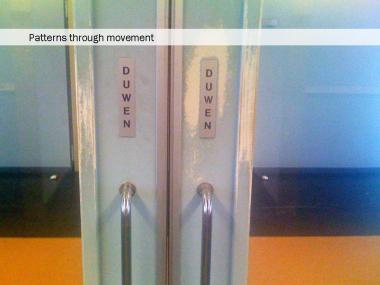
I was also looking into patterns habits and the subconscious. Liking the idea of automatic actions I became interested in patterns that exist within everyday life. Routine for example, and actions that pass us by without conscious thought. It was from this point that I began looking into peoples movements through space, on a variety of scales.

Through a week of drawing I was able to develop new ideas through image alone. This allowed me to investigate areas I otherwise wouldn’t have discovered. During this period I was looking into two main areas, planned environments such as how movements and patterns can be controlled and also the patterns of movements and the traces left behind.
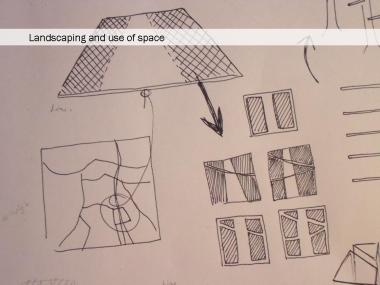
I began thinking about Landscaping and the use of space. When new paths are trodden in a park for example, the space is divided up more and more, maps don’t show this. Human behaviour naturally landscapes an area over time to reveal the most useful and efficient paths to our movement.
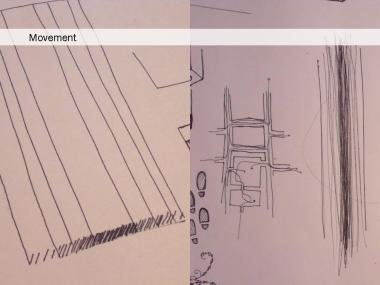
I then went on to consider movement through corridors, and how this can be tracked over time as routes are left behind. My drawings lead me to an idea of a patterned pile in the sense that the thickness is dependant on wear and tear of a particular route. The most frequently used paths being in the thickest pile so carpets would erode at the same rate all over. It also lead me to think about the opposite of this, taking advantage of this process and enhancing it. Perhaps with layers of different coloured materials to wear away and reveal an ever changing pattern.

Thinking about this time scale, and how things alter over different periods of time I began to look into the erosion process revealing more than just wear and tear. I thought about ways you could read into these marks to detect and record not only movement but also age, use and other aspects. Starting with nature and looking at how rings in trees show the years of growth I applied it to a man made process. Doors swinging open – leaving behind scrapes, pattern similar to tree rings, something that happens and develops over time. I was thinking about the bottom of the door, and how could this be adapted to record the different elements.
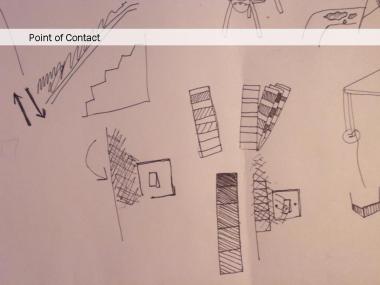
Again leading on from this record of time frames, my drawings developed into ‘points of contact’. Light switches on walls for example where people put hand to wall to find the switch develops a patch of grime. Colour spectrums, like the coppers experiment earlier on is an area I decided to develop as a spectrum of ‘wear’.
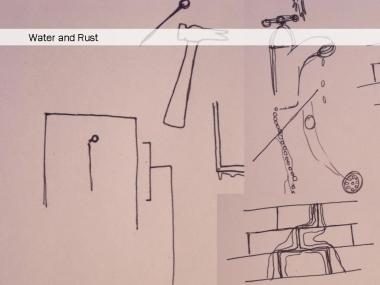
Whilst observing these direct interaction processes I became interested in the more indirect processes such as elements turning a nail rusty and weathering leaving behind water marks. These are areas that again reveal information into the environment and introduce a time frame for the action.

After developing ideas through drawing, I began to look into experiments that could implement some of my thoughts. Through an earlier observation I took a wall from inside a gym as my point of contact. Next to a sheet of warm ups and cool downs there is a mark of grime that has build up over time.
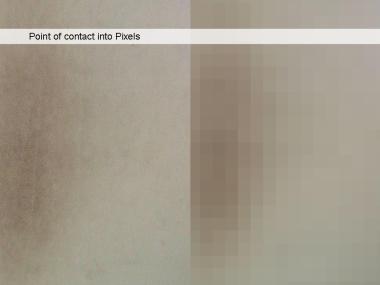
Taking this sample, I tiled and pixelated the image to break the area down into solid colours. This was so a spectrum could be formed. The result was a range of colours representing each layer of dirt that had built up, information to begin reading into.
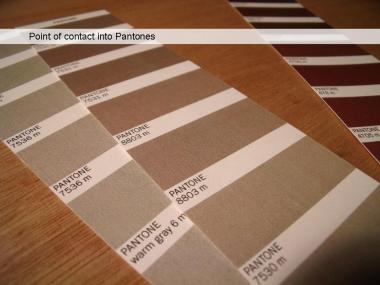
I then took a strip of these colours to create charts of pantone colours that could relate to the number of people warming up and cooling down inside the gym. I also repeated this process with the coins from earlier on in the brief to create a spectrum for them as well.

Experimenting with movement through a space and the idea of patterns that could be revealed, I looked into layering up a surface. I used sheets of different coloured paper to make the pattern revealed easily readable. Over time the paper revealed the layers beneath it to make a natural pattern. It would be interesting to take this further to see if the pattern could be controllable.

I came across examples of object/collector relationships where rust and the aging of an artefact is important to its value. In Japan the oxidised spots on tins and other collectable objects are called ‘saba’ meaning ‘the rust of time’. The importance of the past is what makes these marks a significant element.
There are also examples of where rust has been encouraged for an aesthetic point of view, naturally colouring the exterior of buildings for example. I am interested in the process and uses of rust and this is an area I would like to continue exploring and developing.
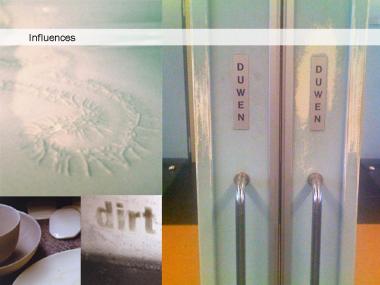
Important influences to my ideas sofar are designers such as Simon Heijdens, who is involved with slow design. He has developed a few projects that are in a similar territory to mine. “Broken White” deals with user object relationships with ceramics cracking with use overtime to reveal a pattern. “Dirt” is another project he has undertaken as a time map of human movements in subway stations.
Also important is the environment around us and reading into patterns and traces that already exist. Looking into the time and how a space or object can evolve is about exposing histories and usages, and this is something that I need to explore more.

In the short term there are experiments I would like to continue with. Patterns of movement is an area I would like to develop, continuing to look at how we impact and show our movements through the floor. Whether this intervention be to control or free up the movements within a space. I would also like to look into the more indirect processes that for example weathering produces to see what information can be gained from that.
In the long term it is important that I begin to distinguish between direct and indirect processes and make the use of the information I discover known. I will continue to blog my ideas and question and develop this area of interest.
